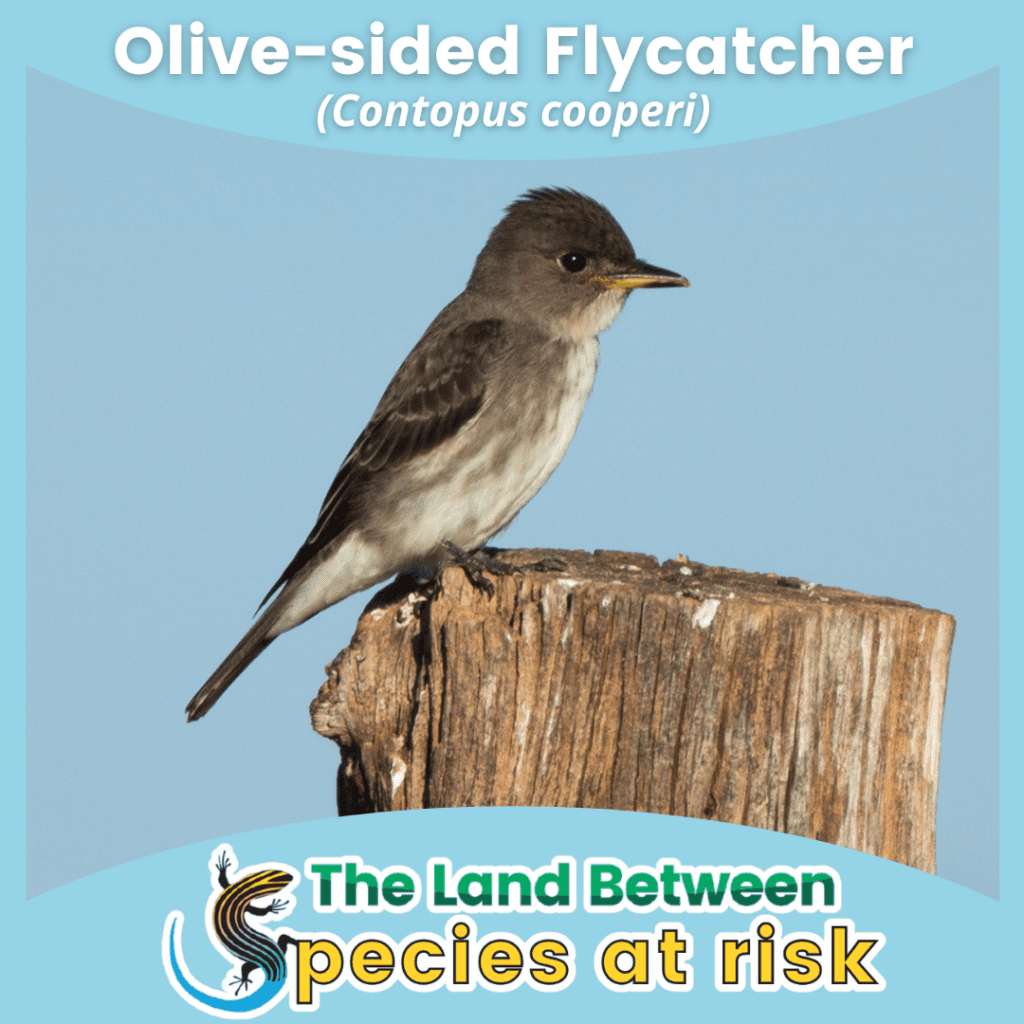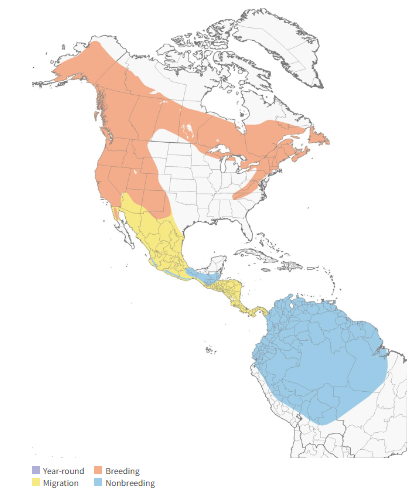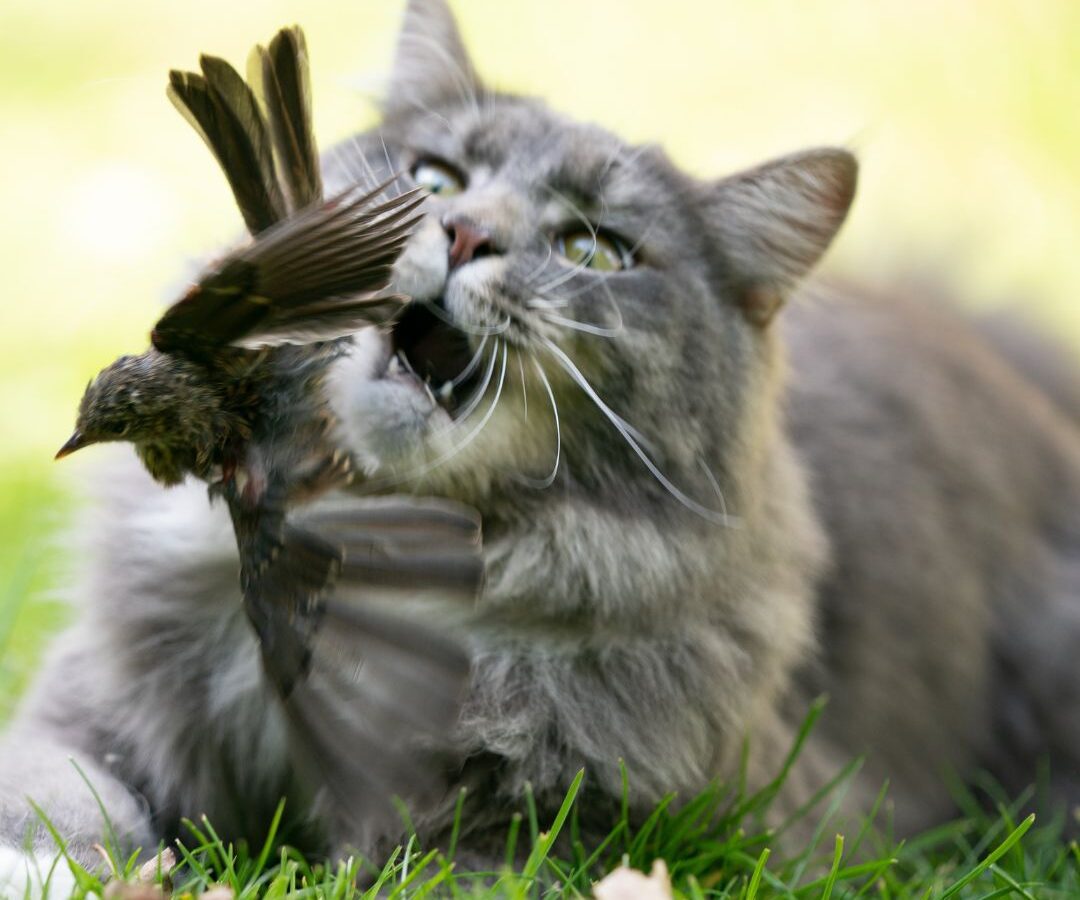
Species Identification:
The Olive-sided Flycatcher spends most of their time perched on a branch and diving down to feed on insects out of the air. They are a mid-sized songbird of about 18-20 cm, with olive-grey feathers and patches of white on the throat and belly. The white colouring on their chest looks like this bird is wearing a vest. The Olive-sided Flycatcher also has slightly upright feathers on the top of their head. Males look quite similar to females, but they are slightly larger and have longer tail feathers. They have a distinctive call- “quick, three beers” that can be heard from up to a kilometer away.
Diet:
The Olive-sided Flycatcher finds a tall branch or snag to hunt from. They dive down to catch a wide range of flying insects. The composition of their diet has changed over time, and varies across their range. A study in 1920 found the Olive-sided Flycatcher’s diet was primarily bees, wasps, and ants, but studies now have found that beetles are the preferred meal. They will also catch dragonflies, grasshoppers, moths, and flies. The Olive-sided Flycatcher has also been known to eat berries during migration or non-breeding season on rare occasions.
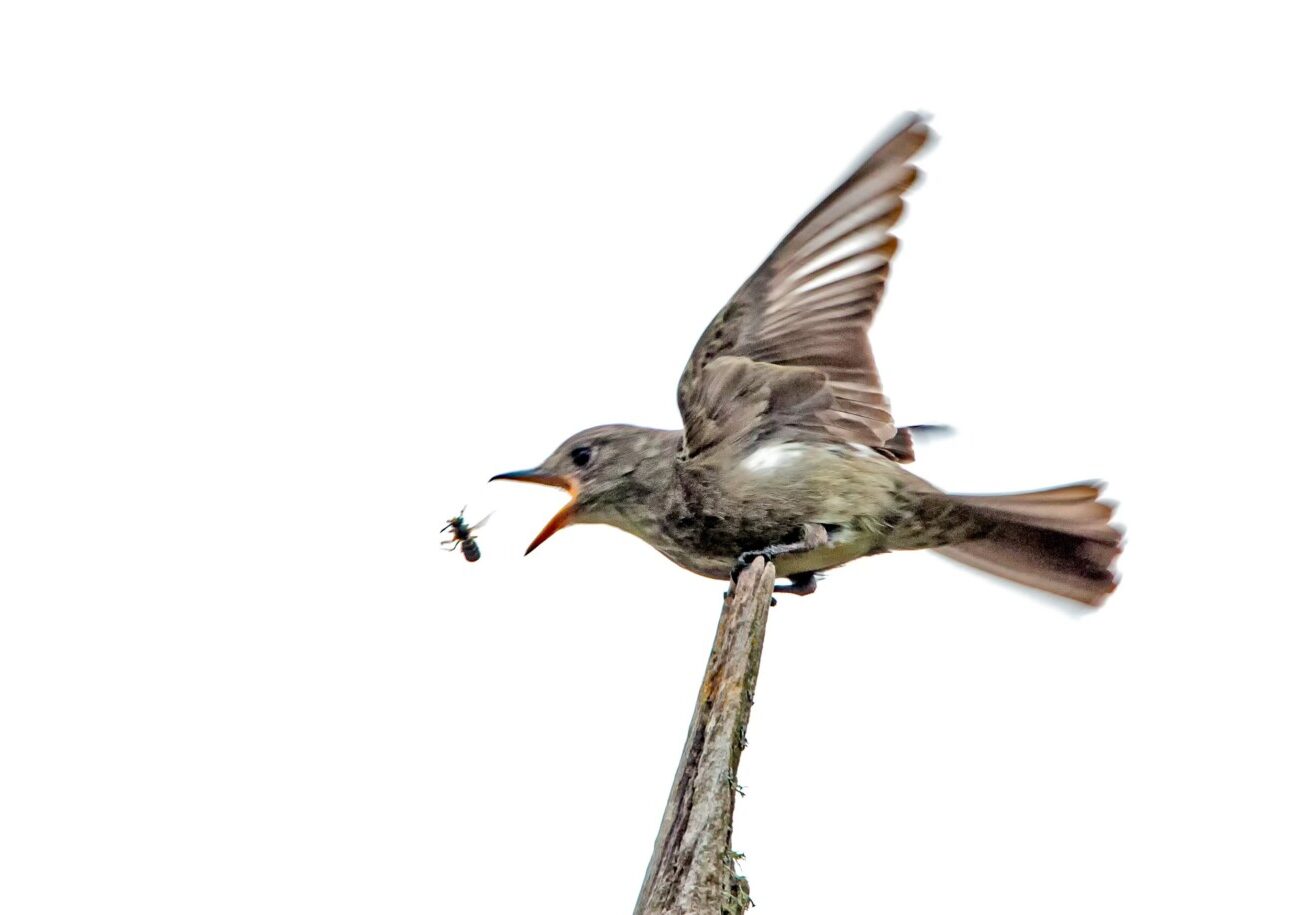
Biology and Behaviour:
The Olive-sided Flycatcher has a long migration and relatively short breeding season compared to other migratory songbirds. They arrive in Ontario and start breeding by mid to late May. The female builds a nest high in a conifer tree, usually towards the end of a branch. She uses sticks and roots, and binds them using spider webs. The female Olive-sided Flycatcher lays an average of three eggs and incubates them for 15 to 19 days while the male brings her food. The hatchlings stay in the nest for about three weeks, and fledglings will rely on their parents for food for another week. These birds only have one brood of offspring per year. The Olive-sided Flycatchers begin their southern migration from the end of August to early September, but some may start as early as July.
While there is little information for predation of adult Olive-sided Flycatchers, there is some evidence of predation by the Sharp-shinned Hawk and Peregrine Falcon. Nests are preyed on by Gray Jays, Common Raven, and Red Squirrels. Olive-sided Flycatchers territories are relatively large (10 to 20 hectares), and are aggressively defended by the male.
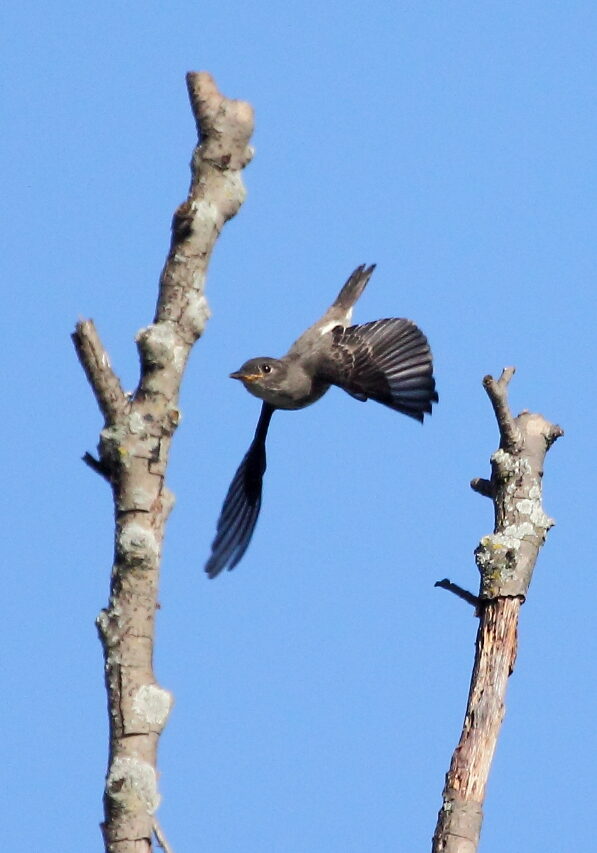
Similar Species:
The Greater Pewee, Eastern Wood-pewee and Western Wood-pewee are similar in colour and shape. The Olive-sided Flycatcher is distinguishable by their larger size, vest-like pattern on their chest, and distinctive song.

Conservation and recovery strategies:
The Olive-sided Flycatcher is protected in Canada under the Migratory Birds Convention Act of 1994, and also has similar protections in the United States. These birds are protected against capture and direct harm, but critical habitat has not yet been identified. In 2016, a Federal Recovery Program was established for the Olive-sided Flycatcher that aims for a short-term recovery by halting population declines by 2025. Long-term recovery is to increase populations using protection of the species and habitat restoration/protection.
Quick Facts:
- Regular low-intensity forest fires are good for Olive-sided Flycatchers and many other species. Fires open up the forest floor, and leave behind standing dead wood that can be home for many insects and cavity nesters, or provide a perch for Flycatchers to hunt from
- A loud snap from their beak shutting can sometimes be heard while hunting
- The oldest recorded Olive-sided Flycatcher was 11 years old. They were caught and re-released in California
Additional Resources:

- Fact Sheet by the Ontario Ministry of Natural Resources & Forestry
- Proposed Recovery Strategy by the Government of Canada under SARA
- The Cornell Lab, all about birds species profile
- Olive-sided Flycatcher e-bird page- good audio, pictures, and range maps
- Audobon Guide to North American Birds
Sources:
COSEWIC. 2018. COSEWIC assessment and status report on the Olive-sided Flycatcher Contopus cooperi in Canada. Committee on the Status of Endangered Wildlife in Canada. Ottawa. ix + 52 pp. (https://www.canada.ca/en/environment-climate-change/services/species-risk-public-registry/cosewic-assessments-status-reports/olive-sided-flycatcher-2018.html).
Environment Canada. 2016. Recovery Strategy for the Olive-sided Flycatcher (Contopus cooperi) in Canada. Species at Risk Act Recovery Strategy Series. Environment Canada, Ottawa. vii + 52 pp

